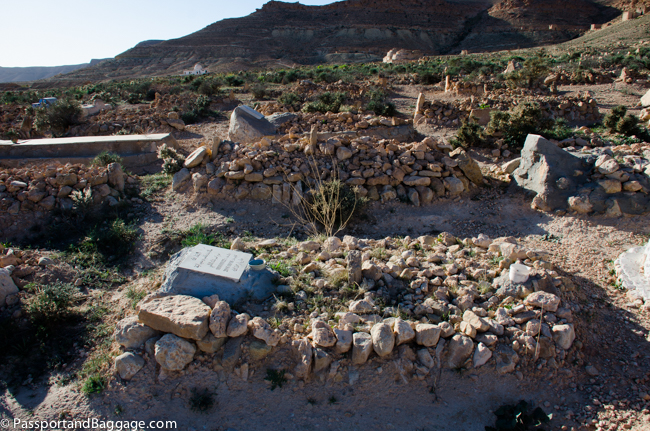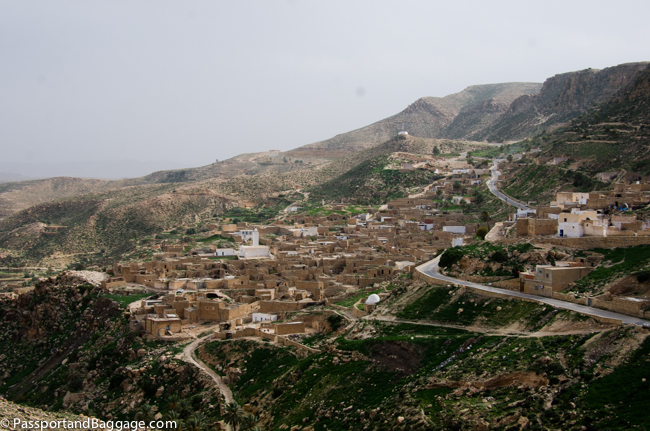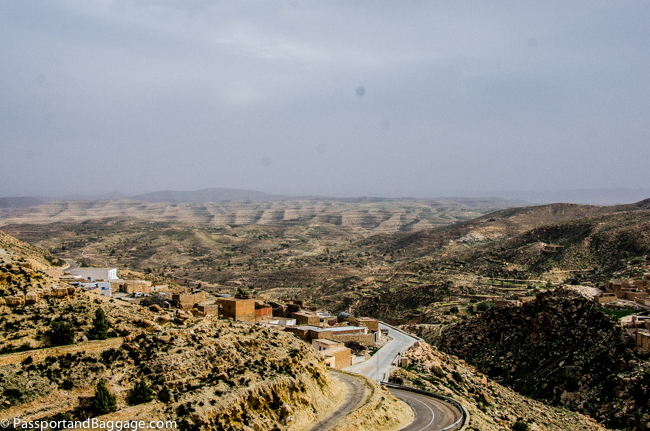December 3, 2019
The far south of Tunisia is sparsely populated and spreads out as a dessert landscape dotted here and there with oases, be it man-made or natural.
In the middle-ages travelers avoided this area due to the lawless and ruthless tribes. Even the French in their conquering gave this area a wide berth. Steven Speilberg, however, left his mark all over this part of Tunisia.
The Berber Villages
Southern Tunisia is a place of stark, almost alien landscapes. This is a place of isolated Berber villages on hilltops and troglodyte homes dug into the ground to protect against the harshness of the climate. Many Berber villages are home to the original inhabitants of North Africa.
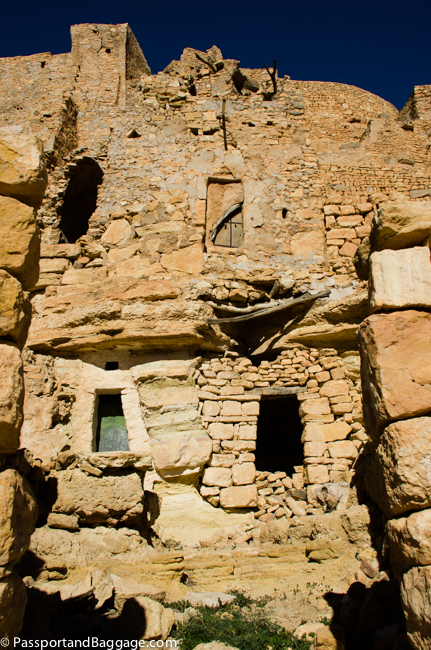
In the 1890s traveler Reginal Ranken said of Chenini “I have seen nearly all the so-called wonders of the world and unhesitatingly say that the cave dwellings of the Saharan troglodytes seem to me to be the most wonderful thing of all.
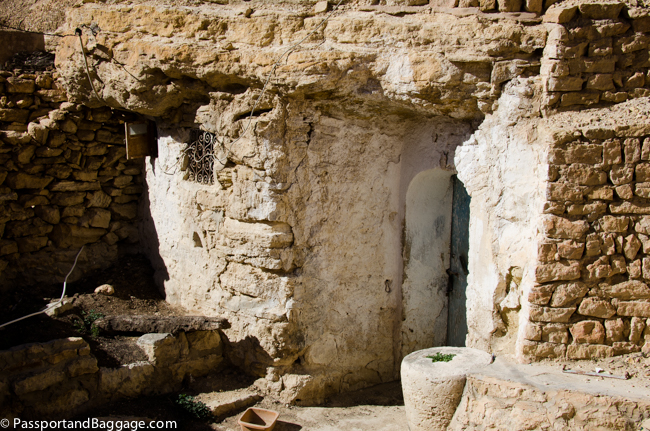
Chenini is rather worse for wear, but it is possible to glean an understanding of how the homes were constructed and lived in.
*
The term Berber is derived from the term barbaroi used by the Greeks to refer to anyone who doesn’t speak Greek, and the term barbari used by Romans to refer to all populations other than Greek or Latins. The names Tmazight and Amazigh are preferred, especially by native speakers in an attempt to avoid the negative connotations and stigmatization imposed on the term Berber.
The name of the language is Tamazight which means exactly ‘Berber Language’.
These towns are dotted all through the Tataouine Governorate, the southernmost of the twenty-four governorates of Tunisia and the only one to border both Algeria and Libya
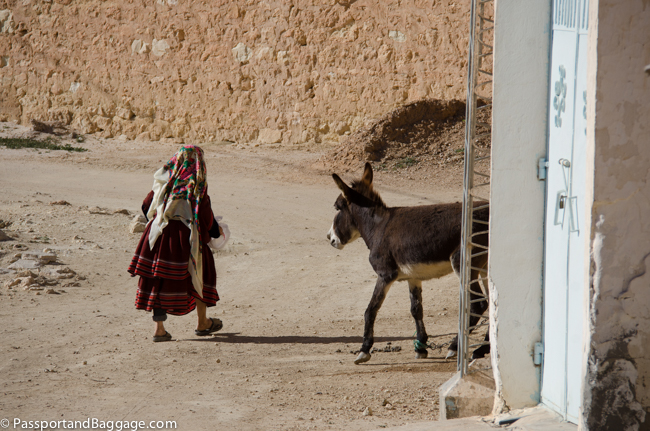 The attraction aside from the fact that much of Star Wars was filmed in this part of Tunisia is the architecture.
The attraction aside from the fact that much of Star Wars was filmed in this part of Tunisia is the architecture.
As a strategy to defend themselves from invaders, Berber settlements were either built on fortified mountaintops or dug into the ground in the form of troglodyte dwellings hidden in the rockface. Today the age-old stone buildings of many of these villages and towns are largely abandoned as their inhabitants have moved to newly built satellite towns of modern buildings.
Throughout this area, the nomadic Berbers stored their grain in ghorfas. While grain was the main item stored in the ghorfas one could have also found salted meat, fish and olive oil. Ghorfa are small stone buildings. They are constructed on top of one another and side by side.
Sacks of earth were placed between the two side walls to act as a support during the construction of the roof. A layer of matting was placed over the top of these sacks, in the form of an arch, and then covered with clay, mortar, and gypsum. Once dry, the clay was chipped away, the sacks and matting removed to leave a gypsum plaster ceiling. Palmwood was used to construct the front door. The inner walls were then covered with gypsum and often decorated.
In the tenth century with the invasion of the Banu Hilal Arab tribe, the Berbers retreated to higher mountain tops. They were forced to build Ksour’s (plural of Ksar) which were fortified ghorfas belonging to each tribe where they could store and if necessary defend their grain.
Often a mosque would be built outside of the Ksar and the farmers would gather to share news and tea.
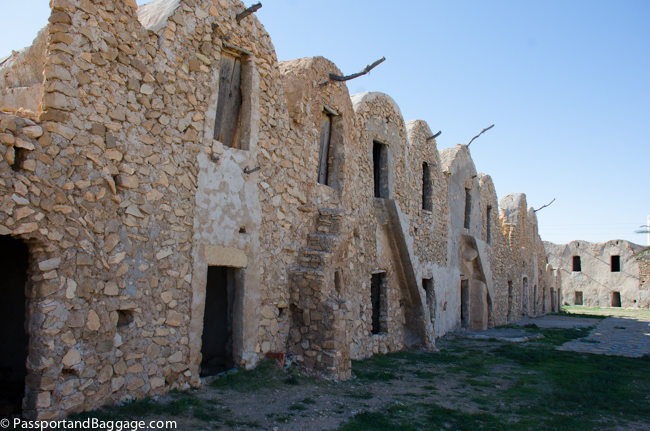
The stairways up to the upper levels of a ksar are somewhat difficult to climb so wooden sticks are impaled above the entranceways and used in a pulley-system to transfer grain from the ground floor up to the storage vault.
Looking inside various ghorfas, each just a little bit different:
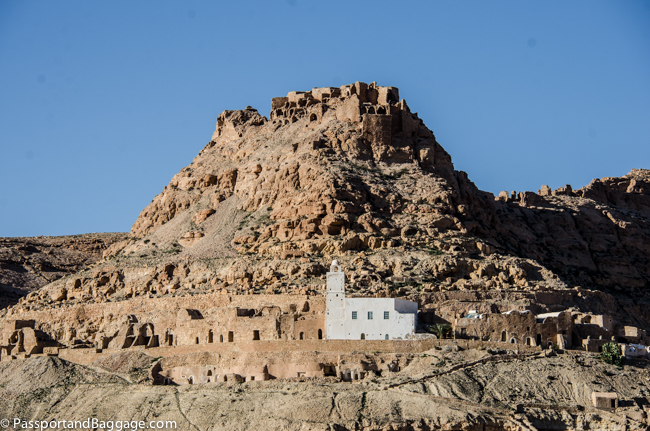
The town of Douiret atop a hill with its mosque down below
The town and ksar of Douiret were inhabited by 3500 people in 1850, only two families now live in the village, the rest having moved down the mountain where there are modern conveniences.
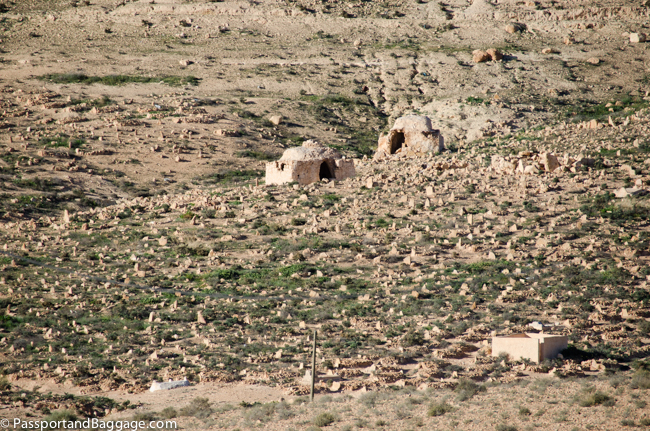
A graveyard at Douiret. The domes are zaouias where the revered marabouts (a Muslim religious leader and teacher in West Africa) are buried
Heading north to Sfax there are a few more Berber towns one completely abandoned on the side of a hillside, that has a view to the end of never.
So yes I did do one Star Wars location visit at Matmata.
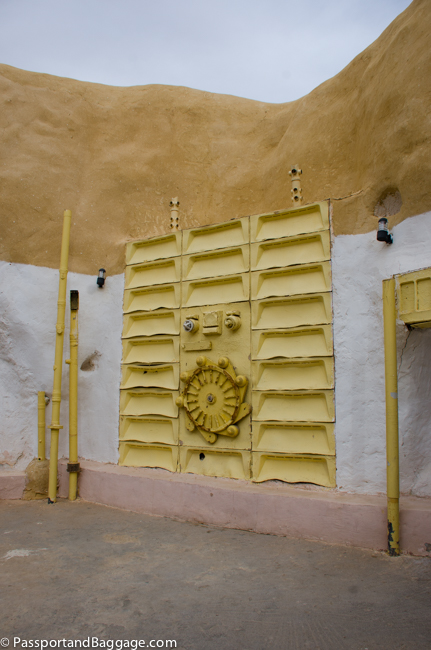
The Hotel Sidi Driss in Matmata was used in 1976 as a filming location for Star Wars Episode IV: A New Hope, in which it featured as the home of Luke Skywalker, his Aunt Beru Lars and Uncle Owen Lars on the planet Tatooine. It was featured again in the 2002 prequel film Star Wars: Episode II – Attack of the Clones
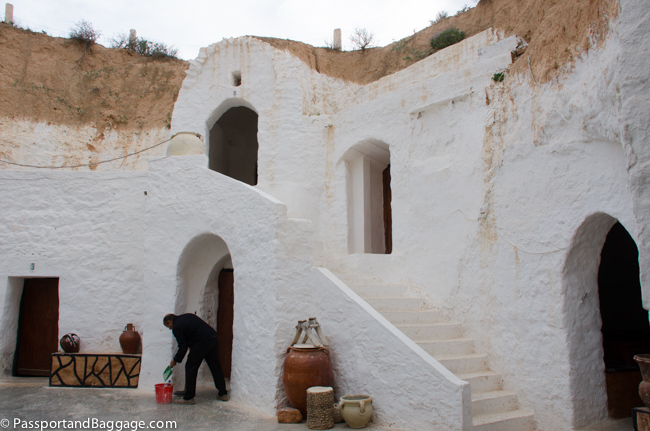
The hotel is designed as a traditional Berber troglodyte underground building. The rooms radiate off of a central courtyard that is open to the sky.
If you are so inclined, here is a list of all the places in Southern Tunisia that George Lucas shot parts of Star Wars.
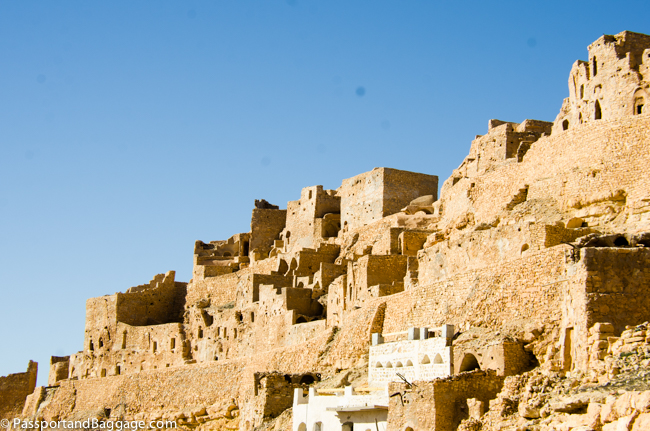

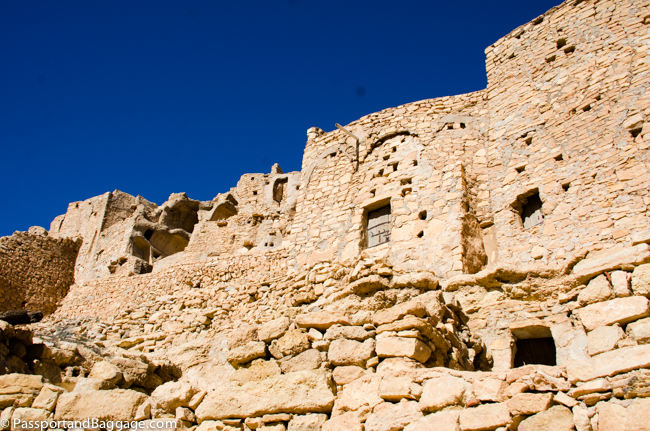

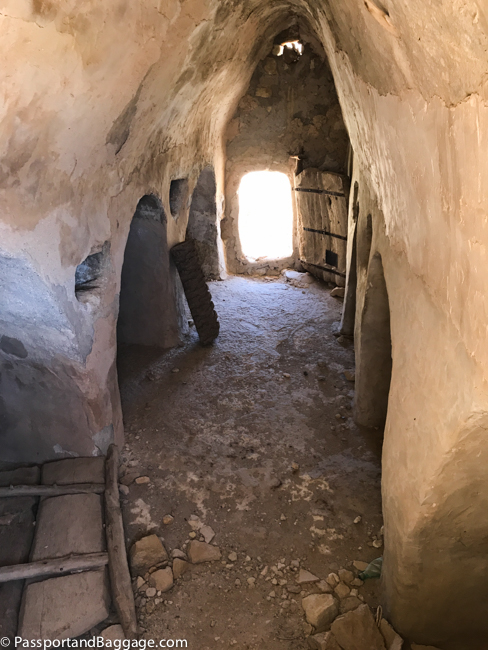
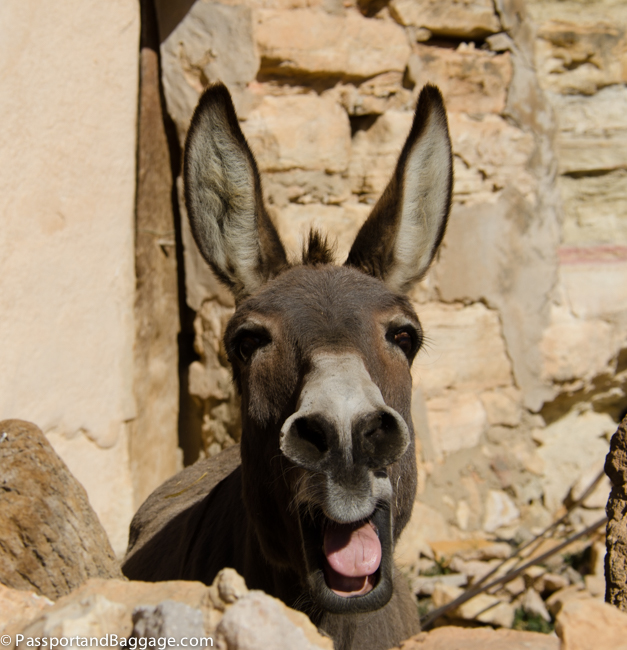
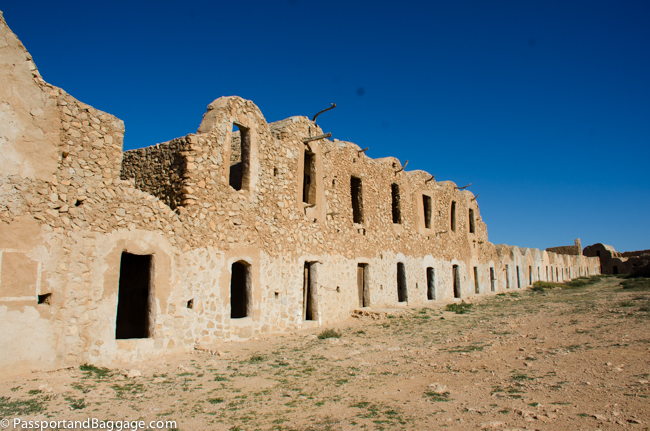
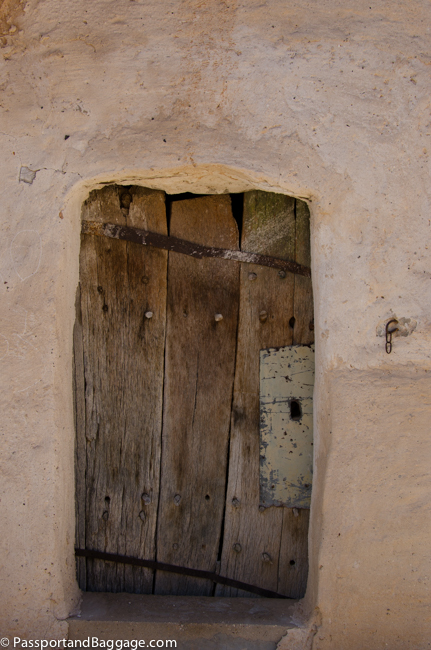
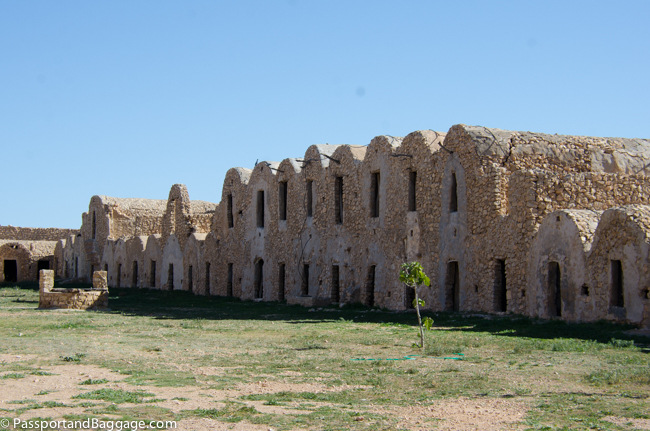
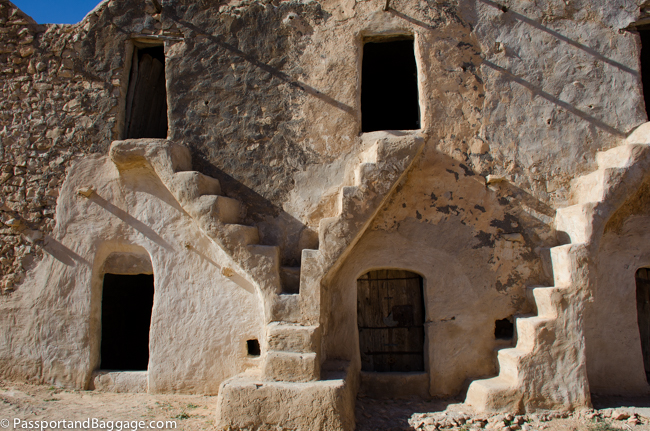
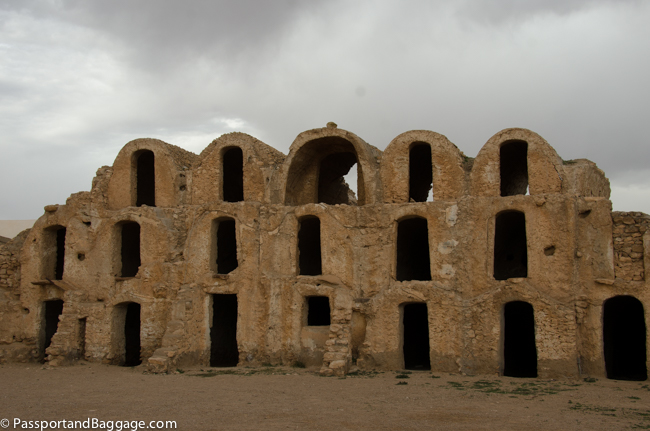
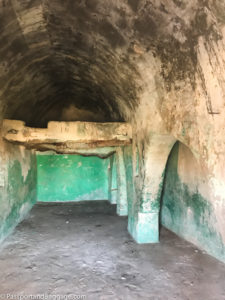
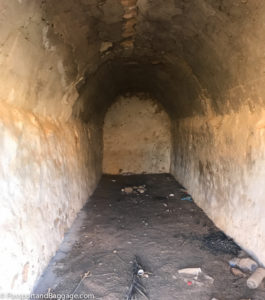
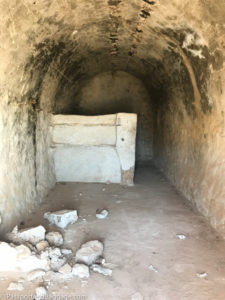
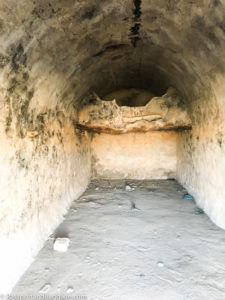
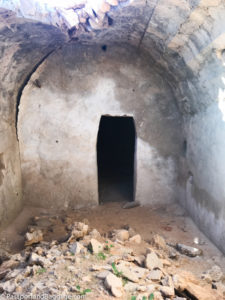
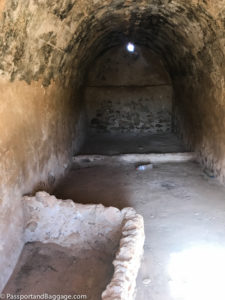 *
*